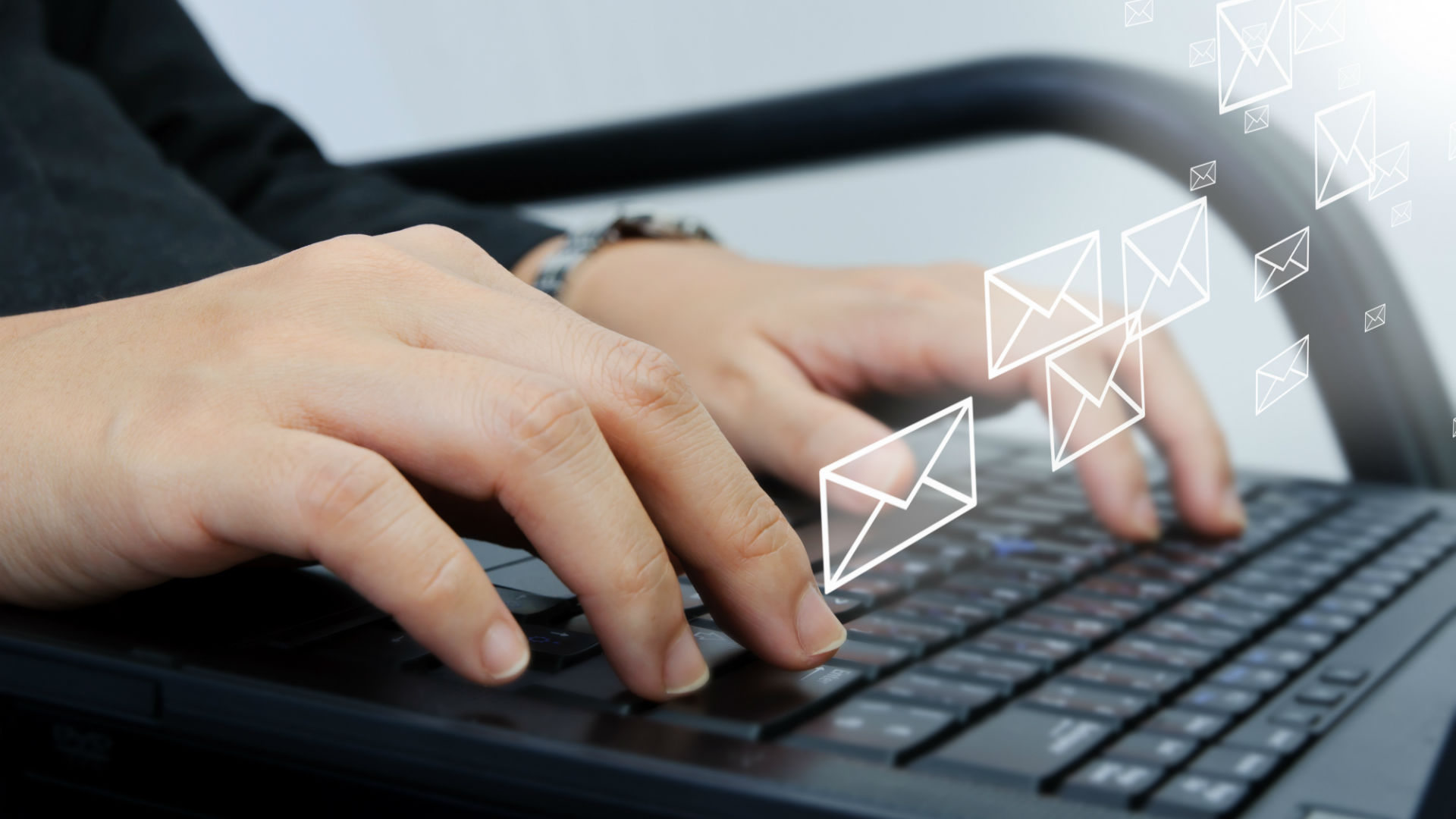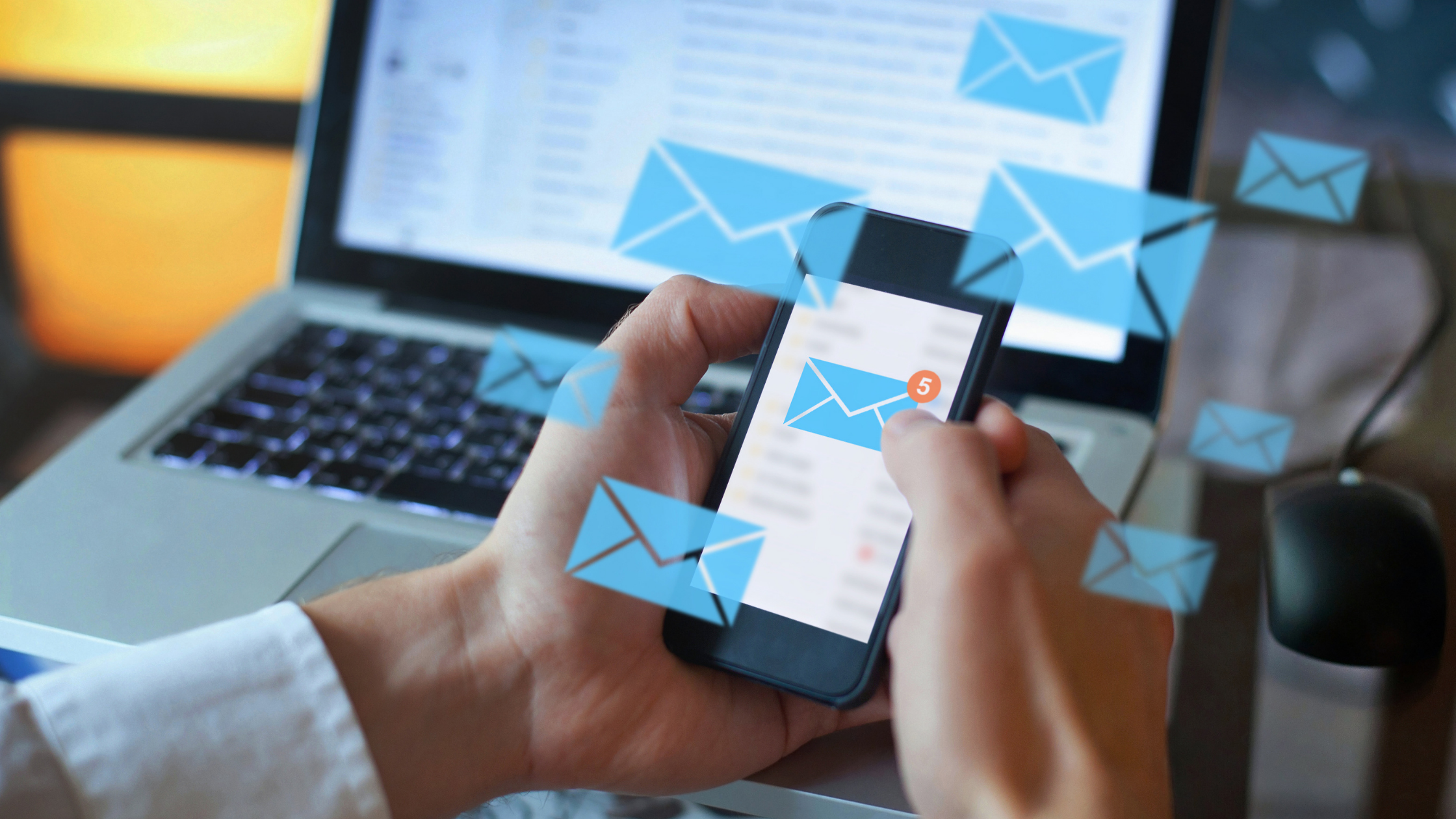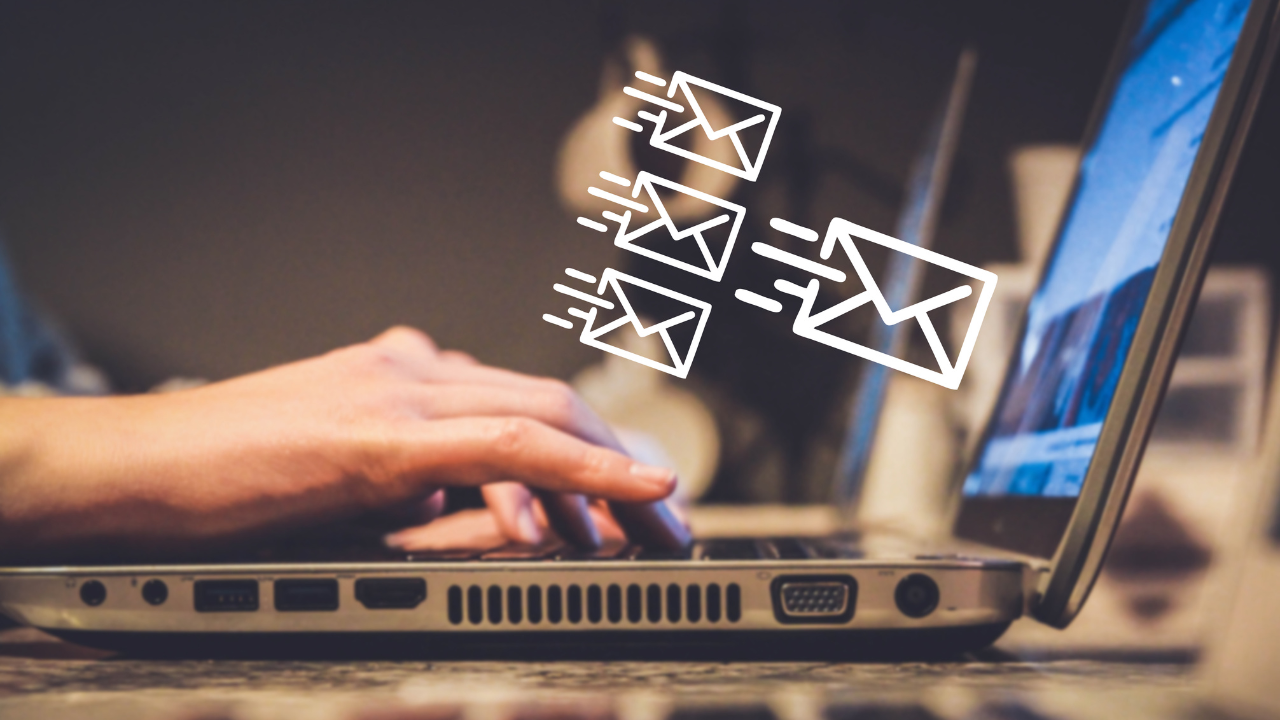
Email marketingremains a cornerstone in the digital marketing landscape, offering businesses a direct channel to engage with their audience. However, in an era of overflowing inboxes, standing out and capturing the attention of recipients is a formidable challenge. In this guide, we will explore actionable tips and best practices onhow to increase engagement in your emailsin your marketing efforts. To cut through the noise and enhance the effectiveness of your email campaigns, it's crucial to employ strategies that foster engagement.
Email Engagement Metrics
Email engagement metrics provide valuable insights into how recipients interact with your email campaigns. Understanding the meaning and purpose of these metrics is essential for evaluating the effectiveness of your email marketing efforts and making informed decisions to enhance engagement. Here's a breakdown of key email engagement metrics, their meanings, and purposes:
- Open Rate - The percentage of delivered emails that recipients opened. Indicates the effectiveness of your subject lines and helps measure the initial appeal of your email content.
- Click-Through Rate (CTR) - The percentage of recipients who clicked on one or more links within the email. Measures the engagement level beyond just opening the email, providing insights into the relevance and effectiveness of your content.
- Conversion Rate - The percentage of email recipients who completed the desired action (e.g., making a purchase, or filling out a form). Evaluate how well your email campaigns drive the intended results and conversions.
- Bounce Rate - The percentage of sent emails that could not be delivered to the recipient's inbox. Highlights potential issues with your email list quality or delivery infrastructure, helping maintain a clean and effective contact list.
- Forwarding Rate - The percentage of recipients who forward the email to others. Indicates the shareability and appeal of your content, potentially extending the reach of your message to new audiences.
- Sharing Rate - The percentage of recipients who share the email on social mediaor through other channels. Measures the social impact of your email content and its potential to generate organic visibility.
- Unsubscribe Rate - The percentage of recipients who opt-out from receiving future emails. Helps identify dissatisfaction or disinterest, guiding adjustments to content, frequency, or targeting to reduce unsubscribes.
- Read Length or Time Spent - The average amount of time recipients spend reading or interacting with the email content. Provides insights into the level of engagement with the content and helps gauge the effectiveness of your messaging.
Regularly monitoring and analyzing these email engagement metrics enables marketers to refine their strategies, optimize content, and deliver more targeted and engaging campaigns. By interpreting these metrics collectively, businesses can adapt their email marketing approach to better resonate with their audience and achieve desired outcomes.
Craft Compelling Subject Lines
Crafting compelling subject lines is an essential element of successful email marketing campaigns. The subject line is the first interaction your audience has with your email, and it plays a pivotal role in determining whether your message gets opened or sent to the digital abyss. Here are some strategies to help you create subject lines that entice recipients to engage with your content.
- Be Clear and Concise -In a crowded inbox, brevity is key. Keep your subject lines concise, aiming for clarity in conveying the purpose or content of your email. Recipients should quickly understand what to expect when they open the message.
- Create a Sense of Urgency -Subject lines that evoke a sense of urgency or time sensitivity can prompt immediate action. Phrases like "Limited Time Offer" or "Act Now" instill a fear of missing out, compelling recipients to open your email promptly.
- Personalize When Possible -Personalization goes beyond just addressing recipients by their names. Tailor subject lines based on previous interactions or preferences, making the email feel more relevant and personalized to individual recipients.
- Ask a Question -Posing a question in your subject line can stimulate curiosity and encourage recipients to seek answers within the email. Choose questions that pique interest or address common pain points of your target audience.
- Use Emojis Sparingly - Emojis can add a touch of personality and visual appeal to your subject lines. However, use them judiciously and ensure they align with your brand and the tone of your message. Emojis should complement, not distract.
- Highlight Benefits or Offers -Clearly communicate the value proposition of your email in the subject line. Whether it's a special offer, exclusive content, or a sneak peek, let recipients know what's in it for them.
- Create Intrigue -A bit of mystery can go a long way. Craft subject lines that tease the content without giving everything away. Intrigue prompts curiosity and makes recipients more likely to open the email to uncover the full story.
- Use Numbers or Lists -Numbers and lists can make your subject lines more visually appealing and convey a sense of order. Whether it's a list of tips, benefits, or reasons to open the email, this format can capture attention.
- Test Different Approaches -Not all subject lines will resonate equally with your audience. Conduct A/B testing to experiment with different styles, tones, and lengths. Analyze the performance data to refine your approach and optimize future campaigns.
- Avoid Spam Trigger Words -Steer clear of words and phrases that may trigger spam filters. Maintain professionalism in your subject lines, avoiding excessive punctuation, all caps, or terms commonly associated with spam.
Segment Your Email List
Segmenting your email list is a strategic approach that involves dividing your subscriber base into distinct groups based on specific criteria. This practice is a fundamental aspect of effective email marketing, allowing you to tailor your messages to different audience segments. Here's why and how you should segment your email list:
- Understand Your Audience -Segmentation begins with a deep understanding of your audience. Analyze data such as demographics, purchase history, and engagement patterns. By gaining insights into the diverse characteristics and behaviors of your subscribers, you can identify the criteria for segmentation.
- Enhance Relevance and Personalization -Segmenting your email list enables you to deliver more relevant and personalized content to each group. Different segments may have varied interests, preferences, and needs. Tailoring your messages to these specific characteristics increases the likelihood of resonating with recipients, leading to higher engagement rates.
- Improve Email Deliverability -Email service providers prioritize deliverability based on user engagement. When you send targeted and relevant content, recipients are more likely to open, click, and interact with your emails. Positive engagement signals to email providers that your messages are valuable, potentially improving your overall deliverability rates.
- Increase Conversion Rates - Segmentation allows you to send highly targeted and personalized campaigns, resulting in increased conversion rates. When subscribers receive content that aligns with their interests or needs, they are more likely to take desired actions, whether it's making a purchase, filling out a form, or clicking through to your website.
- Reduce Unsubscribes and Spam Reports -Sending irrelevant content to your subscribers can lead to higher unsubscribe rates and spam complaints. By segmenting your list and delivering content that resonates with each group, you minimize the risk of annoying recipients with irrelevant messages, fostering a more positive perception of your brand.
- Lifecycle Stage Targeting -Segmentation based on where subscribers are in their customer journey (e.g., new leads, repeat customers, inactive subscribers) allows you to deliver targeted content that aligns with their specific needs at each stage. This approach helps nurture leads, retain customers, and re-engage inactive subscribers.
- Geographic and Demographic Segmentation -Consider segmenting based on geographic location, age, gender, or other demographic factors. This type of segmentation allows you to customize your messaging to better match the characteristics and preferences of specific groups within your overall audience.
- Behavioral Segmentation -Analyze the actions and behaviors of your subscribers, such as purchase history, website interactions, or engagement with previous emails. Behavioral segmentation enables you to send targeted messages based on how subscribers have interacted with your brand in the past.
Personalize Content
Personalizing content in your email marketing efforts involves tailoring your messages to individual recipients based on their preferences, behaviors, and characteristics. This personalized approach is crucial for creating a more engaging and relevant experience for your audience. Here's why and how you should personalize your email content:
- Establishing a Connection -Personalization allows you to establish a deeper connection with your audience. By addressing recipients by their names, understanding their preferences, and acknowledging their past interactions with your brand, you demonstrate a level of attentiveness that fosters a sense of connection and loyalty.
- Increasing Relevance -Relevance is key in capturing and maintaining the attention of your audience. Personalizing content ensures that the information and offers you provide align with the specific interests and needs of each recipient. A relevant message is more likely to resonate and drive the desired actions.
- Tailoring Recommendations -Leverage data on past purchases, browsing history, or interactions with your website to offer personalized product or content recommendations. This level of customization demonstrates that you understand your audience's preferences and can enhance the overall user experience.
- Dynamic Content Blocks- Implement dynamic content blocks within your emails to display different content to different segments of your audience. This allows you to create one email template with adaptable sections that change based on the recipient's profile, ensuring a personalized experience for each subscriber.
- Behavioral Triggers -Set up automated email campaigns triggered by specific user actions or behaviors. For example, if a subscriber abandons their cart on your e-commerce site, send a personalized follow-up email with a gentle nudge and perhaps an incentive to complete the purchase.
- Personalized Subject Lines -Extend personalization to your subject lines. Including the recipient's name or referencing their specific interests can significantly increase open rates. A personalized subject line stands out in a crowded inbox and entices the recipient to explore the content inside.
- Segmentation for Personalization -Segment your email list based on various criteria, such as demographics, purchase history, or engagement level. This allows you to create highly targeted and personalized campaigns for specific groups, tailoring your messaging to meet the unique needs of each segment.
- A/B Testing for Optimization -Utilize A/B testing to refine your personalization strategies. Experiment with different personalization elements, such as varying levels of customization or different types of personalized recommendations, to identify what resonates most effectively with your audience.
Optimize For Mobile Devices
Optimizing your email campaigns for mobile devices is a critical aspect of successful email marketing, considering the prevalence of smartphones and the increasing trend of mobile email usage. Ensuring that your emails are not only accessible but also visually appealing and easy to navigate on smaller screens can significantly impact the effectiveness of your campaigns. Here's why and how you should optimize your emails for mobile devices:
- Proliferation of Mobile Usage -With a growing number of users accessing their emails on mobile devices, optimizing for mobile is no longer a choice but a necessity. A significant portion of your audience is likely to open and interact with your emails on smartphones or tablets, emphasizing the importance of a mobile-friendly design.
- Responsive Design -Implement responsive design principles to ensure that your emails automatically adjust to different screen sizes. This approach provides a seamless and visually appealing experience, regardless of whether the recipient is viewing the email on a desktop, tablet, or smartphone. Responsive design enhances readability and usability on smaller screens.
- Clear and Concise Content -Mobile users often have limited time and attention spans. Optimize your content to be clear, concise, and easily scannable. Use short paragraphs, bullet points, and compelling visuals to convey your message efficiently.
- Touch-Friendly Buttons -Make sure that any buttons or calls-to-action (CTAs) in your emails are touch-friendly. Ensure they are of an adequate size and have enough spacing around them to prevent accidental clicks. This improves the user experience and increases the likelihood of recipients engaging with your content.
- Single-Column Layouts -Design your emails with a single-column layout to accommodate the vertical scrolling nature of mobile devices. This ensures that users can navigate through your content seamlessly without the need for horizontal scrolling, providing a more user-friendly experience.
- Optimize Images and Media -Compress and optimize images to reduce file sizes without compromising quality. This helps in faster loading times, especially in areas with slower network connections. Consider the use of alternative text (alt text) for images to convey the message even if images are not displayed.
- Test Across Devices and Email Clients -Regularly test your email campaigns across various mobile devices and email clients to ensure consistent rendering. Different devices and email applications may interpret code differently, so testing is crucial to catch any potential issues before sending your emails to your entire audience.
- Preview Text -Craft compelling preview text that appears alongside your subject line. This snippet of text provides additional context and can influence a recipient's decision to open the email. Keep it concise and enticing to encourage clicks.
- Monitor Analytics for Mobile Engagement -Analyze your email analytics to understand how recipients engage with your emails on mobile devices. Track metrics such as open rates and click-through rates specifically on mobile platforms. This data can provide insights into the effectiveness of your mobile optimization efforts.
Include Compelling Visuals
Integrating compelling visuals into your email marketing campaigns is a powerful strategy to capture attention, convey messages effectively, and enhance overall engagement. In the digital landscape, where visual content is highly consumed, incorporating eye-catching graphics, images, and videos can significantly impact the success of your email campaigns. Here's why and how you should include compelling visuals in your emails:
- Enhance Visual Appeal - Humans are naturally drawn to visuals, and incorporating compelling images or graphics into your emails can immediately capture the recipient's attention. A visually appealing email stands out in a crowded inbox and entices the reader to explore the content further.
- Convey Information Effectively -Visuals are an efficient way to convey complex information or ideas quickly. Use infographics, charts, or diagrams to present data in a visually engaging manner. Visual elements break up the text, making the content more digestible and memorable for the audience.
- Reinforce Brand Identity - Including visuals that align with your brand's aesthetics and identity helps reinforce brand recognition. Consistent use of colors, fonts, and imagery creates a cohesive visual experience, strengthening the connection between your brand and the recipient.
- Showcase Products or Services - For businesses, showcasing products or services through high-quality visuals can be particularly impactful. Use professional images, product shots, or even videos to demonstrate features, benefits, and use cases. Visuals provide a tangible and immersive experience for the audience.
- Humanize Your Brand -Integrate visuals that humanize your brand, such as behind-the-scenesimages, team photos, or customer testimonials. Putting a face to your brand fosters a sense of connection and trust with your audience, making your emails more relatable.
- Use Attention-Grabbing Thumbnails -If you're incorporating videos or multiple pieces of content, use attention-grabbing thumbnails. A well-chosen thumbnail encourages recipients to click and engage with multimedia content, driving higher interaction rates.
- Optimize for Quick Loading -Ensure that your visuals are optimized for quick loading times. Large file sizes can slow down email loading, leading to a less-than-ideal user experience. Compress images and consider utilizing responsive design to adapt visuals to different screen sizes.
- Interactive Visuals -Explore interactive visual elements, such as GIFs or interactive graphics. These dynamic components add an element of fun and interactivity to your emails, keeping recipients engaged and encouraging them to explore further.
- Test Different Visual Elements -Conduct A/B testing with different visual elements to understand what resonates best with your audience. Test variations in images, graphics, or even the placement of visuals within your emails. Use data-driven insights to refine your visual strategy over time.
- 1Mobile-Friendly Visuals -Ensure that your visuals are optimized for mobile devices. Given the prevalence of mobile email consumption, it's crucial that your visuals adapt seamlessly to smaller screens, maintaining their impact and effectiveness.
Add Clear Calls-to-Action (CTAs)
Clear calls-to-action (CTAs) are fundamental elements of effective email marketing campaigns, guiding recipients on the desired actions to take after reading your message. A well-crafted CTA not only directs user behavior but also contributes to the overall success of your campaign. Here's why and how you should incorporate clear CTAs into your email content:
- Drive Conversions -The primary purpose of a CTA is to drive conversions. Whether it's making a purchase, signing up for a webinar, or downloading a resource, a clear and compelling CTA motivates recipients to take the next step in the customer journey.
- Provide Direction -CTAs provide explicit direction to your audience, reducing ambiguity about what you want them to do. Clearly state the action you want them to take, whether it's "Shop Now," "Subscribe," or "Learn More," making it easy for recipients to understand the desired outcome.
- Use Action-Oriented Language -Craft CTAs using action-oriented language that instills a sense of urgency or excitement. Phrases like "Get Started," "Explore Now," or "Limited Time Offer" can create a compelling call to action that encourages immediate engagement.
- Make CTAs Visually Stand Out -Design CTAs to be visually prominent within your email. Use contrasting colors, bold fonts, or strategically placed buttons to draw attention. Visual hierarchyis crucial to ensure that the CTA is one of the first elements recipients notice when scanning the email.
- Keep it Simple -Simplicity is key when it comes to CTAs. Clearly communicate the value proposition and keep the CTA message concise. Avoid clutter and distractions, focusing on a singular, clear call to action to prevent decision paralysis.
- Above-the-Fold Placement -Place CTAs strategically, ensuring they are visible without requiring excessive scrolling. An above-the-fold placement increases the likelihood that recipients will see and interact with the CTA before losing interest or moving on.
- Test Different CTA Variations -Conduct A/B testing to experiment with different CTA variations. Test different wording, colors, sizes, and placements to determine what resonates best with your audience. Use data insights to refine and optimize your CTAs for future campaigns.
- Mobile-Friendly CTAs -Given the prevalence of mobile email consumption, optimize your CTAs for smaller screens. Ensure they are touch-friendly and maintain their visual appeal on mobile devices. Responsive design principles should extend to your CTA buttons for a seamless user experience.
- Align with Email Content -Harmonize your CTAs with the overall content and theme of your email. A cohesive and relevant CTA ensures a smooth transition from the email's message to the desired action, reinforcing the narrative and value proposition.
- Create a Sense of FOMO (Fear of Missing Out) -Incorporate elements that create a sense of urgency or exclusivity in your CTAs. Phrases like "Act Now" or "Limited Time Offer" can instill a fear of missing out, compelling recipients to take immediate action.
Optimize Send Times
Optimizing the send times of your email campaigns is a strategic practice that involves choosing the most opportune moments to reach your audience. The timing of your emails can significantly impact their open and engagement rates. Here's why and how you should optimize the send times of your email marketing efforts:
- Audience Behavior Patterns -Understanding the behavior patterns of your target audience is crucial when determining the optimal send times. Analyze data on when your audience is most active, considering factors such as time zones, typical daily routines, and industry-specific trends.
- Experiment with Different Times -Conduct A/B testing to experiment with different send times and identify patterns in recipient engagement. Test sending emails during various days of the week and times of the day to gather data on when your audience is most responsive. Use this information to refine your email schedule.
- Consider Time Zones -If your audience is spread across different time zones, consider segmenting your email list based on geographical locations. This allows you to tailor your send times to be more convenient for recipients in specific regions, avoiding the risk of sending emails when they are less likely to be engaged.
- Peak Engagement Periods -Identify peak engagement periods based on historical data. This could be during specific days of the week, such as midweek when people are settled into their routines, or during certain hours when they are more likely to check their emails.
- Mobile Consumption Habits- Given the prevalence of mobile email consumption, consider when your audience is most likely to check their emails on mobile devices. Many users check their emails during commuting hours or in the evening, making these potentially effective send times for mobile-friendly campaigns.
- Test Across Different Campaign Types -Different types of campaigns (e.g., newsletters, promotional offers, informational content) may have varied optimal send times. Test send times specifically for each type of campaign to understand the unique engagement patterns associated with different content.
- Analyze Past Performance -Review historical performance data to identify trends and patterns in email engagement. Look for correlations between certain send times and higher open rates, click-through rates, and conversions. This data can serve as a valuable guide in determining the most effective times for your future campaigns.
- Account for Seasonal Variations -Consider how seasonal changes may impact the behavior of your audience. Holidays, vacation seasons, or other significant eventscan influence when people are more likely to engage with their emails. Adjust your send times accordingly to align with these variations.
- Regularly Update Send Time Strategies -Consumer behavior can evolve over time, and external factors like changes in work patterns or global events can influence when people check their emails. Regularly reassess and update your send time strategies to stay aligned with shifting audience preferences.
- Monitor and Adapt -Continuous monitoring and adaptation are key to successful send time optimization. Use analytics tools to track the performance of your email campaigns and be prepared to adjust your send times based on new insights or changes in audience behavior.
Encourage Social Sharing
Encouraging social sharing in your email marketing campaigns is a strategic approach to extending the reach of your content and leveraging the power of social media. When your audience shares your emails with their networks, it can lead to increased brand visibility, and engagement, and potentially attract new subscribers. Here's why and how you should encourage social sharing in your email campaigns:
- Expand Reach and Amplify Content -Social sharing transforms your email content into shareable assets, allowing your audience to disseminate your message across various social media platforms. This extends the reach of your content beyond your email list, tapping into the broader networks of your subscribers.
- Foster Community Engagement-Encouraging social sharing helps build a sense of community around your brand. When your audience shares your content, it creates a conversation on social platforms, enabling users to engage with your brand and each other. This community engagement can contribute to brand loyalty and advocacy.
- Include Social Share Buttons -Make social sharing easy for your subscribers by including prominent and visually appealing social share buttons within your emails. These buttons should link directly to the relevant social media platforms, enabling users to share your content with just a click.
- Incentivize Sharing with Contests or Rewards -Incentivize social sharing by running contests or offering rewards for subscribers who share your emails. This can be in the form of exclusive discounts, access to premium content, or entries into a giveaway. Incentivesencourage subscribers to actively promote your brand on social media.
- Craft Shareable Content -Create content that is inherently shareable and likely to resonate with a wider audience. This could include visually appealing graphics, entertaining videos, thought-provoking articles, or exclusive offers. Content that provides value or elicits an emotional response is more likely to be shared.
- Highlight Shareable Quotes or Statistics -Incorporate shareable quotes or statistics within your email content. When subscribers come across compelling and shareable snippets, they are more likely to share them on social media platforms, bringing attention to your brand and driving organic reach.
- Emphasize the Importance of Sharing -Encourage social sharing by explicitly stating the value of sharing your content. Express how sharing can benefit the recipient's network, whether it's by providing valuable information, exclusive offers, or entertaining content. Clearly communicate the mutual value of sharing.
- Leverage User-Generated Content -Encourage your audience to create and share their own content related to your brand. User-generated content is a powerful form of social sharing that not only promotes your brand but also builds trust and authenticity. Showcase user-generated content in your emails and across social media platforms.
- Monitor and Engage with Social Activity -Regularly monitor social media platforms for mentions, shares, and comments related to your email campaigns. Engage with users who share your content, express gratitude, and foster a sense of community. Acknowledging and interacting with your audience's social activity strengthens the connection between your brand and its followers.
- Track and Analyze Social Sharing Metrics -Use analytics tools to track the performance of social sharing within your email campaigns. Monitor metrics such as the number of shares, reach, and engagement generated through social platforms. Analyzing these metrics provides insights into the effectiveness of your social sharing strategies and helps refine future campaigns.
Frequently Asked Questions
How Can I Improve Email Engagement Rates?
To improve email engagement rates, focus on crafting compelling subject lines, delivering relevant and personalized content, optimizing for mobile devices, using clear calls-to-action, and regularly analyzing performance data to refine your strategies.
What Are The Best Times To Send Emails For Higher Engagement?
The best times to send emails vary, but midweek, during the late morning or early afternoon, tends to see higher engagement. However, it's essential to A/B test and analyze your audience's behavior to determine the optimal send times for your specific audience.
How Do I Reduce Email Bounce Rates?
Reduce email bounce rates by maintaining a clean and regularly updated email list, using double opt-ins, avoiding spam trigger words in your content, and monitoring and addressing deliverability issues promptly.
Why Is Personalization Important For Email Engagement?
Personalization is crucial for email engagement because it tailors content to individual preferences, increasing relevance. Personalized emails resonate better with recipients, leading to higher open rates, click-through rates, and overall engagement.
Conclusion
In the ever-evolving landscape of digital communication, mastering the art of email engagement is a vital skill for marketers. By incorporating personalized approaches, optimizing design and timing, and consistently analyzing performance metrics, you can create email campaigns that not only capture attention but also drive meaningful interactions. Remember, the journey to increased engagement is an ongoing process of refinement and adaptation.
As you implement these strategies and experiment with your unique brand voice, you'll find your emails becoming not just messages but valuable connections with your audience. Cheers to building more engaging and impactful email campaigns!



